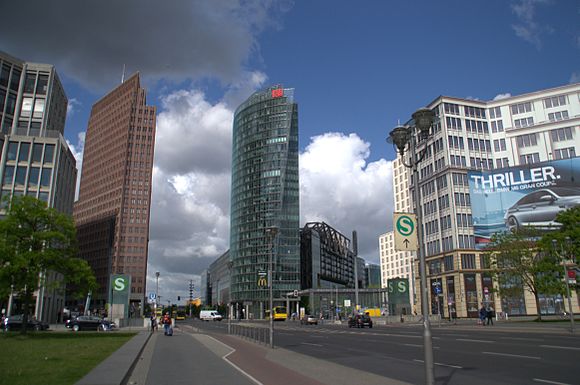
The Collective Impact session proved popular with attendees. Photo by Jason Krüger (WMDE), freely licensed under CC BY 4.0.
The Wikimedia movement can certainly be credited with developing innovative online methods of collaboration that have had an enormous impact and revolutionized how knowledge is created, accessed and shared. Now, to leverage human and financial resources in the quest for free and open knowledge, volunteers and organizations of our movement are increasingly engaging in partnerships with external groups and entities.
We can’t expect these partners, from multiple public and private backgrounds, to share all of our values, goals and methods. But what does this mean for how we work together with them?
To find answers, it’s helpful to look at the evidence base that exists on impactful partnerships. This is gathered by thousands of organizations, consultants and social scientists, and summarized under our broad framework known as Collective Impact.
At the recent Wikimedia Conference in Berlin, an impulse presentation on the Collective Impact framework created a great deal of discussion and enthusiasm.
Collective Impact is not a method, model, set of recipe, or a toolkit. Instead, it is a theoretical framework that allows for evidence on what makes multi-stakeholder coalitions successful, in terms of achieving change, to be gathered and documented.
The overarching idea is that complex social issues, those central to Wikimedia’s mission of unlocking the sum of all human knowledge, will not be resolved by one-off approaches or single players. It will instead require sophisticated initiatives, engaging partners from the many stakeholders in the issue. At Wikimedia Deutschland (Germany), for example, we are working with a very diverse set of partners including our many volunteers to the federal education department, local and state government entities, foundations, large corporations, small IT start-ups, NGOs, universities, research institutes, and schools.
The Collective Impact evidence base, collected and shared by the consulting firm FSG since 2009, is organized by the five characteristics that partnerships with proven impact all seem to have in common: A common agenda, shared measurement systems, mutually reinforcing activities, continuous communication, and backbone support organizations.

Wikimedia Conference 2015 was held in Berlin, Germany. Photo by Habib M’henni, freely licensed under CC BY 3.0
Today, a growing body of Collective Impact learning resources and case studies is available on the Internet, so each of us can quickly become familiar with the approach. Together we can try to find, from the Wikimedia movement’s perspective, what we can learn and apply in regional and local partnerships. Which tools are most useful and helpful in building coalitions to promote open knowledge? What does the approach mean for those international collaborations many of us are interested in? What can Collective Impact teach us in terms of the meaningful engagement of volunteers and communities? What are some things we can contribute to the Collective Impact evidence base from a movement perspective?
Last but not least, what if we applied the Collective Impact approach to the whole movement? This question certainly provoked some interesting discussion at the Wikimedia Conference. We realized that the questions raised by the Chapters Dialogue were largely aligned with the five characteristics:
- What do we as a movement want to achieve? Do we run a website, or foster free knowledge? Why are we doing the things we do, and what for?
- How do we define impact when exploring new territory? And how do we measure success?
- What is the role of the Wikimedia Foundation? And of the chapters?
- How do we want to communicate with each other? How can we build the necessary empathy and learn from each other? How can we overcome the old narrative and perceptions?
- Where does the money come from, and where should it go? Should money be the limiting factor when striving for Free Knowledge?
- What movement framework is best suited to fulfill the Wikimedia mission?
The Collective Impact lens does indeed provide a framework for movement discussions. The movement’s impact and metrics are the most obvious hot issues that have been under discussion recently.
The last two Chapters Dialogue questions address money and governance, and are not as easily covered by the five Collective Impact characteristics. Rather, they are related to the Backbone and Mutually Reinforcing Activities characteristics. Here, Wikimedia organizations could enhance the Collective Impact knowledge base by adding the learnings of our global movement with democratic, participatory values and the reality of its power and funding structures.
So what’s next? For building local and regional partnerships with external entries, Wikimedia organizations could immediately start applying collective impact wisdom by determining what is the vision, values and strategies that your organization shares with its current and potential partners. Then, find out how your strengths and assets complement each other, and how these assets create something bigger than the sum of their parts.
Take time to develop, celebrate and strengthen partnerships before blindly diving into projects. Agree on the why, and then the how. Write it down. Develop a theory of change, together. Write it down… and once you start on joint initiatives, make sure the functions that form the collaboration’s backbone are appropriately funded and staffed.
Finally, communicate, not just within your initiatives, but with the movement as well. Let’s use existing movement channels, such as learning patterns, blogs, and metawiki, to start exchanging learnings, tools, and ideas. WMDE is looking forward to the journey!
For more on the Collective Impact framework, see Collective Impact Articles in the SSI Review and the Collective Impact Forum’s blog.
Nikki Zeuner
Wikimedia Deutschland

Can you help us translate this article?
In order for this article to reach as many people as possible we would like your help. Can you translate this article to get the message out?
Start translation